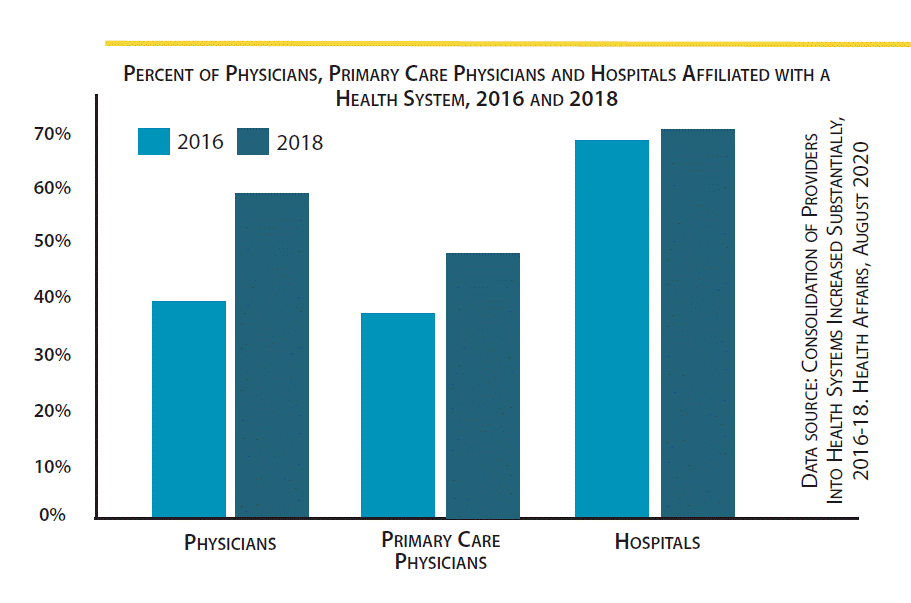More Than Half of All Doctors Are Employed by Health Systems

The Shift to Health System Affiliation for U.S. Physicians
The job landscape for U.S. physicians has shifted significantly, with over 75% now employed by hospitals, health systems, or companies like health insurers, highlighting a rise in health system affiliation. This trend away from independent private practices has been ongoing for years, but the COVID-19 pandemic accelerated it. Key reasons for this shift include market changes, new policies, and evolving doctor lifestyles.
Many young physicians are opting for jobs right after residency to find a better work-life balance. A 2023 survey showed that the biggest draws of being employed are not having to manage a small business and the assurance of a steady income.
New Insights from the AHRQ Compendium of U.S. Health Systems
Recent data from the Agency for Healthcare Research and Quality (AHRQ) reveals that the percentage of doctors in group practices affiliated with vertically integrated health systems rose from 56.9% to 61.9% between 2018 and 2022. These findings are part of AHRQ’s Compendium of U.S. Health Systems, a vital resource for examining healthcare organizations.
The Compendium is a vital resource for states, healthcare leaders, and researchers to understand health system structures and consolidation trends. Recent data shows that physician group practices are expanding, with those linked to health systems growing from an average of 54 to 66 doctors between 2018 and 2022.
Are Physicians Fairly Compensated in Health System Affiliation?
Even though U.S. physicians, especially specialists, rank among the highest-paid professionals worldwide, less than half believe they receive fair pay for their workload. Much of their dissatisfaction arises from the heavy load of administrative tasks that don’t involve patient care.
The high rate of burnout among physicians is mainly due to “too many bureaucratic tasks.” In 2023, electronic health records (EHRs) and prior authorizations (PAs) were highlighted as major time-consuming activities, with the average physician and their staff spending 12 hours a week on these tasks.
The Persistent Physician Shortage
The frustration among physicians has prompted many to think about early retirement or leaving the medical field entirely. The United States is already facing a significant physician shortage, with an estimated gap of 37,000 physicians in 2021.
According to the Association of American Medical Colleges, this shortage is expected to grow to over 86,000 by 2036. The main reason for this shortage is the heavy administrative burden. As a result, more physicians are opting for employment rather than private practice to avoid the increased bureaucratic demands of owning a practice.
Moving Forward with Health System Affiliation
The shift towards healthcare system affiliation is transforming the medical profession in the United States. While employment provides stability and lessens administrative burdens, it also brings compensation and job satisfaction challenges. As healthcare evolves, tackling these issues will be essential for maintaining a sustainable and effective healthcare system.
Protect Your Practice Today with Malpractice Insurance
Navigating healthcare system affiliation means protecting your career. We help physicians find the right malpractice insurance. We also provide quotes from top insurers and a med-mal specialist to assist you in choosing the best coverage. So, don’t risk your practice, get a quote today with Cunningham Group.
*This article has been updated with new information
Cited Sources:
Doctors Joining Health Systems
Compendium
U.S. Physicians

